List of notable Dutch colonial buildings built by or during the Dutch Governorate of Ceylon in present-day Sri Lanka. The Dutch Ceylon was a Governorate established by the Dutch East India Company and lasted from 1640 until 1796. During this period many Dutch style buildings and structures were built that exist to this day, many other smaller buildings and houses also exist throughout the country.
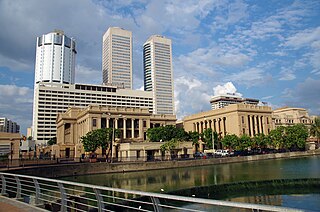
Colombo is the commercial capital and largest city of Sri Lanka by population. According to the Brookings Institution, Colombo metropolitan area has a population of 5.6 million, and 752,993 in the Municipality. It is the financial centre of the island and a tourist destination. It is located on the west coast of the island and adjacent to the Greater Colombo area which includes Sri Jayawardenepura Kotte, the legislative capital of Sri Lanka, and Dehiwala-Mount Lavinia. Colombo is often referred to as the capital since Sri Jayawardenepura Kotte is itself within the urban/suburban area of Colombo. It is also the administrative capital of the Western Province and the district capital of Colombo District. Colombo is a busy and vibrant city with a mixture of modern life, colonial buildings and monuments.

Matara is a major city in Sri Lanka, on the southern coast of Southern Province. It is the second largest city in Southern Province. It is 160 km (99 mi) from Colombo. It is a major commercial hub, and it is the administrative capital and largest city of Matara District.
Negombo is a major city in Sri Lanka, situated on the west coast and at the mouth of the Negombo Lagoon, in Western Province, 38 km (24 mi) from Colombo via Colombo - Katunayake Expressway.

Galle Face is a 5 ha ocean-side urban park, which stretches for 500 m (1,600 ft) along the coast, in the heart of Colombo, the financial and business capital of Sri Lanka. The promenade was initially laid out in 1859 by Governor Sir Henry George Ward, although the original Galle Face Green extended over a much larger area than is seen today. The Galle Face Green was initially used for horse racing and as a golf course, but was also used for cricket, polo, football, tennis and rugby.

The American Ceylon Mission (ACM) to Jaffna, Sri Lanka started with the arrival in 1813 of missionaries sponsored by the American Board of Commissioners for Foreign Missions (ABCFM). Although they had originally planned to work in Galle, the British colonial office in Ceylon restricted the Americans to out-of-the-way Jaffna due to the security concerns of the British who were warring with France at the time. The critical period of the impact of the missionaries was from the 1820s to early 20th century. During this time, they engaged in original translations from English to Tamil, printing, and publishing, establishing primary, secondary and tertiary educational institutions and providing health care for residents of the Jaffna Peninsula. These activities resulted in many social changes amongst Sri Lankan Tamils that survive even today. They also led to the attainment of a lopsided literacy level among residents in the relatively small peninsula that is cited by scholars as one of the primary factors contributing to the recently ended civil war. Many notable educational and health institutions within the Jaffna Peninsula owe their origins to the missionary activists from America. Missionaries also courted controversy by publishing negative information about local religious practices and rituals.

Forts and fortifications in Sri Lanka date back thousands of years with many being built by Sri Lankan Kings, these include several walled cities. With the out set of colonial rule in the Indian Ocean, Sri Lanka was occupied by several major colonial empires that from time-to-time became the dominant power in the Indian Ocean. The colonists built several western styled forts, mostly in and round the coast of the island. The first to build colonial forts in Sri Lanka were the Portuguese, these forts were captured and later expanded by the Dutch. The British occupied these Dutch forts during the Napoleonic wars.

The architecture of Sri Lanka displays a rich variety of architectural forms and styles. Shaivism has had a many influence on early Sri Lankan architecture, during the region of King Ravana, then Buddhism has had a significant influence on Sri Lankan architecture, since it was introduced to the island in the 3rd Century BCE.

Fort (Colombo) is the central business district of Colombo in Sri Lanka. It is the financial district of Colombo and the location of the Colombo Stock Exchange (CSE) and the World Trade Centre of Colombo from which the CSE operates. It is also the location of the Bank of Ceylon headquarters. Along the foreshore of the Fort area is the Galle Face Green Promenade, built in 1859 under the governance of Sir Henry George Ward, the Governor of Ceylon during British colonial era. Fort is also home to the General Post Office, hotels, government departments and offices.
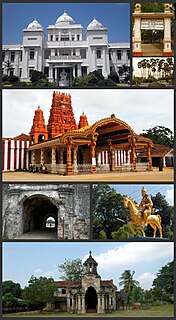
Jaffna is the capital city of the Northern Province of Sri Lanka. It is the administrative headquarters of the Jaffna District located on a peninsula of the same name. With a population of 88,138 in 2012, Jaffna is Sri Lanka's 12th most populous city. Jaffna is approximately six miles from Kandarodai which served as an emporium in the Jaffna peninsula from classical antiquity. Jaffna's suburb Nallur, served as the capital of the four-century-long medieval Jaffna Kingdom.
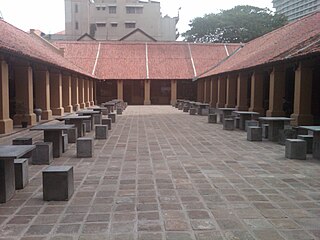
The Old Colombo Dutch Hospital is considered to be the oldest building in the Colombo Fort area dating back to the Dutch colonial era in Sri Lanka. It is now a heritage building and a shopping and dining precinct.

Jaffna Fort is a fort built by the Portuguese at Jaffna, Sri Lanka in 1618 under Phillippe de Oliveira following the Portuguese invasion of Jaffna. The fort is located near the coastal village of Gurunagar. Due to numerous miracles attributed to the statue of Virgin Mary in the church nearby, the fort was named as Fortress of Our Lady of Miracles of Jafanapatão. It was captured by the Dutch under Rijcklof van Goens in 1658 who expanded it. In 1795, it was taken over by the British, and remained under the control of a British garrison till 1948. As the only large military fort in the country, due to the presence of only government and military buildings within its ramparts, it was garrisoned by a detachment of the Ceylon Army.
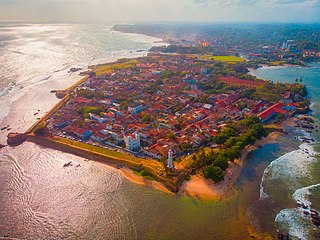
Galle Fort, in the Bay of Galle on the southwest coast of Sri Lanka, was built first in 1588 by the Portuguese, then extensively fortified by the Dutch during the 17th century from 1649 onwards. It is a historical, archaeological and architectural heritage monument, which even after more than 432 years maintains a polished appearance, due to extensive reconstruction work done by Archaeological Department of Sri Lanka.

The Christian Reformed Church of Sri Lanka is the oldest Protestant church on the island.

Wolvendaal Church is located in Pettah, a neighbourhood of Colombo. It is one of the most important Dutch Colonial era buildings in Sri Lanka, and is one of the oldest Protestant churches still in use in the country.

The Dutch Reformed Church is located within the Matara fort in Matara and is situated near the entrance to the fort. The church was built by the Dutch in 1706 and is a smaller version of the church in Galle fort. It is one of the oldest Protestant churches still in use in the country.

The Groote Kerk or Dutch Reformed Church is located within the Galle fort in Galle, Sri Lanka and is situated near the entrance to the fort. The church was built by the Dutch in 1755 and is one of the oldest Protestant churches still in use in the country.
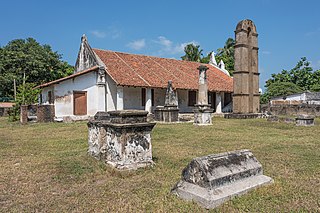
The Dutch Reformed Church is located between the Dutch fort and the village of Kalpitiya. The church was built by the Dutch in 1706 and is a smaller version of the church in the Matara fort. It is one of the oldest Protestant churches in the country.
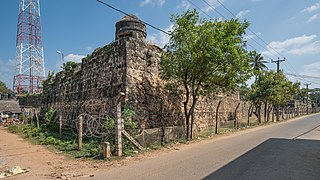
Kalpitiya Fort was built by the Dutch between 1667 and 1676. Kalpitiya was important as it commands the entrance to the adjacent bay, Puttalam Lagoon. The surrounding Puttalam area was one of the major cinnamon cultivation areas in Sri Lanka. The Dutch even constructed a canal from Puttalam via Negombo to Colombo to transport cinnamon from the area.
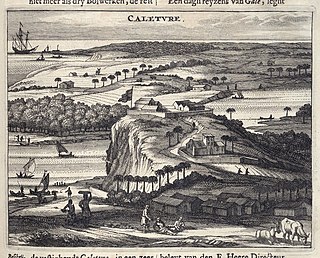
Kalutara fort was built by the Portuguese in 1622. It was located in Kalutara, Sri Lanka.

Kruys Church or Kruys Kerk is located within the Jaffna fort in Jaffna, Sri Lanka and is situated near the entrance to the fort. The church was built by the Dutch in 1706 and was one of the oldest Protestant churches in the country.